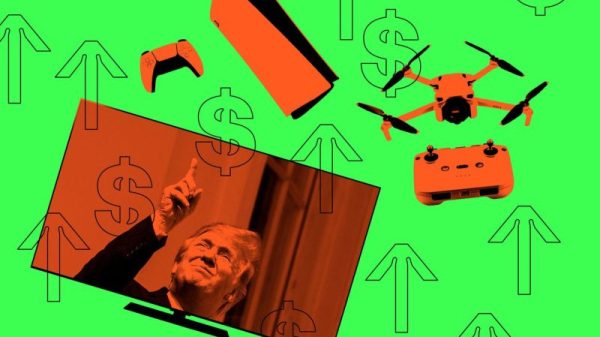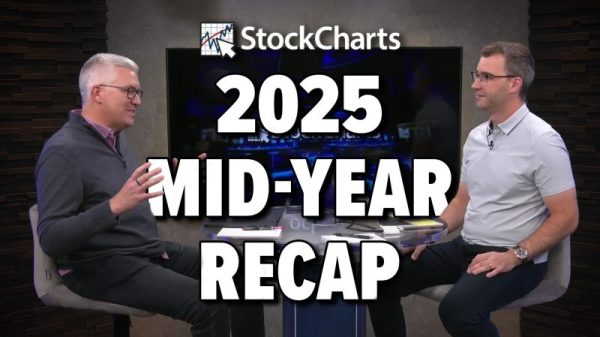The important context for discussions of threats to American democracy is not the aftermath of June’s presidential debate but the aftermath of 2020’s presidential election.
Then, President Donald Trump worked feverishly to retain power despite being rejected by the electorate overall and by the electorate in five states that he won four years before. American voters and voters in Arizona, Georgia, Michigan, Pennsylvania and Wisconsin were given a choice between Trump and Joe Biden, and they picked Joe Biden.
More accurately, they chose slates of electors who supported Joe Biden. As those who’ve taken fifth-grade social studies know, the American president is formally selected not by voters but by members of the electoral college. That gave Trump the opportunity to spend the weeks between the November election and the January counting of electoral votes attempting to shift which electors were counted. It didn’t work, but not for lack of trying.
This layer of intermediaries between voters and decisions is common in our system of representative democracy. It comes into play, too, in how the two major political parties select nominees for president. Voters who participate in party caucuses and primaries are voting on candidates, yes — but more immediately on the number of delegates those candidates are awarded for the party’s convention. It’s there that the nominee is formally determined, even if it’s usually a fait accompli. The convention is equivalent, in other words, to the counting of electors on Jan. 6.
With that, then, you can already see how Biden’s withdrawal from the 2024 Democratic nominating contest is not in any way akin to Trump’s post-2020 efforts, much less any sort of “coup.”
The idea that the Democratic Party underwent a “coup” has been a popular one over the past 24 hours. After a senior Trump campaign official floated the descriptor, Sen. Tom Cotton (R-Ark.) offered it directly in a post on social media.
“Joe Biden succumbed to a coup by Nancy Pelosi, Barack Obama, and Hollywood donors, ignoring millions of Democratic primary votes,” he wrote. “Donald Trump took a bullet for democracy.”
At the outset, we should make explicit that these are not good-faith arguments. Cotton does not deserve the benefit of the doubt that he is concerned about the votes of Democratic primary voters. The play is, instead, to try to erode one of the most significant arguments against Trump’s candidacy: that he did try to subvert democracy and that, returned to the White House, he would try to do so further. When your candidate is appearing at campaign rallies and praising Chinese autocrat Xi Jinping and his “iron fist” control over his population, it’s useful to have a way to suggest that your opponents are just as bad.
But it is inescapably the fact that President Biden withdrew from the race voluntarily. Grudgingly and under pressure, certainly, but voluntarily. Right-wing commentator Erick Erickson, not known for his quiet reserve, equated Biden’s stepping aside with “all those people accidentally falling out of windows in Russia.” I suspect it is not the case that many of those defenestrations were a function of Russian officials ceding to public calls from members of the Politburo for them to take a swan dive.
The most important consideration here is that Biden, while the incumbent president, wasn’t even the party’s nominee on Sunday when he withdrew. He was the presumptive nominee, the guy who earned the most delegates after the primary voting. But his poor performance in the June debate led to a reconsideration on the part of Democratic leaders that, it’s worth noting, brought them more in line with the actual Democratic electorate. In April, Pew Research Center found that more than 6 in 10 Democrats wanted a candidate besides Biden on the ballot in November. In late January, half did. Now they’ll have one, those primary votes from earlier this year notwithstanding.
Now imagine that, instead of Biden withdrawing and Vice President Harris quickly consolidating support — including from Biden! — a Democrat had shown up at the convention and attempted to seize the nomination there. Imagine that he pressured the party’s Rules Committee to recognize not the delegates Biden had won but, instead, a slate of delegates promoting his own candidacy. This was required, he argues, because of rampant voter fraud, a claim for which he has no credible evidence. The Rules Committee declines to accede to his request, but the candidate — giving a public speech down the street from the facility where the convention is being held — tells thousands of supporters to march to the convention to protest.
You presumably see where this analogy is going. But even then the situation wouldn’t be analogous, because it would be an attempt to hijack a nomination, not presidential power itself. It’s a step removed. If this Democratic Trump managed to cow the party into recognizing his nomination as valid, he’d still have to win in November — and it seems safe to assume that a lot of Democrats would stay home rather than give him their support.
The analogy also works in the other direction. If Biden had decided — under pressure from his party — that Trump should retain the presidency, he could have, say, asked Harris to step down, appointed Trump as his vice president and then resigned. If powerful elements of Biden’s party demanded that Trump be president, if polling showed that most Democrats were happy to see someone other than Biden be president and if Biden decided to do this? Sure. Weird, but it’s hard to argue.
That’s not how Trump approached his 2020 loss. Instead, he tried to cheat Biden voters in those five states out of their choice. He tried to short-circuit the effort to count electors. And then he suggested that the furious crowd near the White House direct their anger at the Capitol.
It’s useful for Trump’s allies to pretend that Biden’s decision was comparable. It isn’t.



























